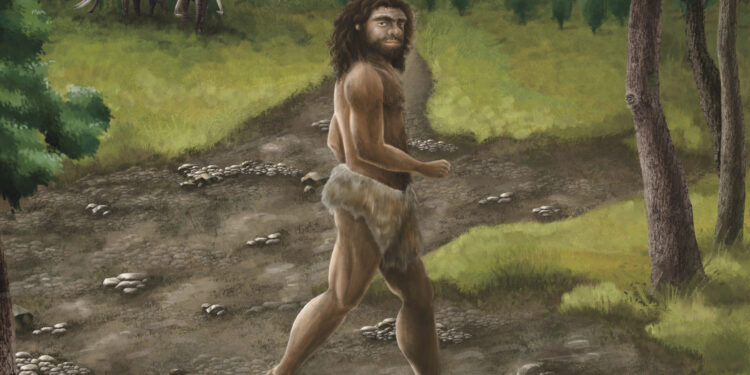This illustration provided by researchers in April 2025 represents a male from Denisovan to Taiwan at the time of the Pleistocene, about 2.6 million at 11,700 years ago. Credit: Cheng-Han Sun via AP
An old jaw discovered in Taiwan belonged to an enigmatic group of early human ancestors called Denisovans, scientists reported on Thursday.
We know relatively few Denisovans, a group extinct of human cousins which interacts with the Neanderthals and our own species, Homo Sapiens.
“Denisovan fossils are very rare”, with only a few confirmed discoveries in East Asia, said the co-author of the Takumi Tsutaya study at the graduate university for advanced studies in Japan.
Until now, the only known Denisovan fossils include partial jaws, a few teeth and part of a finger bone found in the caves in Siberia and Tibet. Some scientists believe that fossils found in a Laos cave can also belong to Denisovans.
The likely identification of Taiwan’s jaw while Denisovan extends the region where scientists know that these former people formerly lived, Tsutaya said.
The partial jaw was recovered for the first time when a fishing operation dredged the seabed in the Penghu canal near the Taiwan Strait. After being sold to an antiquity workshop, a collector spotted it and bought it in 2008, then later gave it to the National Museum of Natural Sciences in Taiwan.
Based on the composition of the marine invertebrates attached to it, the fossil was dated from the Pleistocene era. But exactly what a species of early human ancestor to which it belonged remained a mystery.
-
This photo provided by the researchers in April 2025 shows the coast of the Penghu Islands of Taiwan at the low tide in January 2024, and how the shallow sea extends, near the place where a fossil jaw was found in the Penghu canal. Credit: Takumi Tsutaya via AP
-
This illustration provided by researchers in April 2025 represents a male from Denisovan to Taiwan at the time of the Pleistocene, about 2.6 million at 11,700 years ago. Credit: Cheng-Han Sun via AP
The state of the fossil made it impossible to study ancient DNA. But recently, scientists from Taiwan, Japan and Denmark have been able to extract certain protein sequences from the incomplete jaw.
An analysis has shown that certain protein sequences looked like those contained in the genome of a Denisovan fossil recovered in Siberia. The results were published in the journal Science.
Although the new research is promising, Rick Potts, director of the Human Origins project at the Smithsonian Institution, said that he would like to see other data before confirming the Taiwan fossil as Denisovan.
Potts, who was not involved in the new research, praised the study for “a fantastic work to recover certain proteins”. But he added, such a small ribbon of material may not give a complete image.
At one point, at least three groups of human ancestors – Venisovans, Neanderthals and Homo Sapiens – coexisted in Eurasia and sometimes rooted, according to researchers.
“We can identify the Neanderthal elements and the elements of Denisovan” in the DNA of certain people living today, said Tsutaya.
More information:
Takumi Tsutaya et al, a male mandible from Denisovan du Pleistocene Taiwan, Science (2025). DOI: 10.1126 / Science.ads3888. www.science.org/doi/10.1126/science.ads3888888
© 2025 The Associated Press. All rights reserved. This material cannot be published, disseminated, rewritten or redistributed without authorization.
Quote: Taiwan’s old jaw belongs to a mysterious group of human ancestors, scientists say (2025, April 10) recovered on April 11, 2025 from
This document is subject to copyright. In addition to any fair program for private or research purposes, no part can be reproduced without written authorization. The content is provided only for information purposes.



